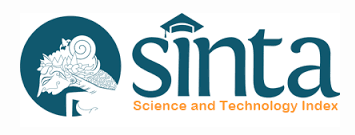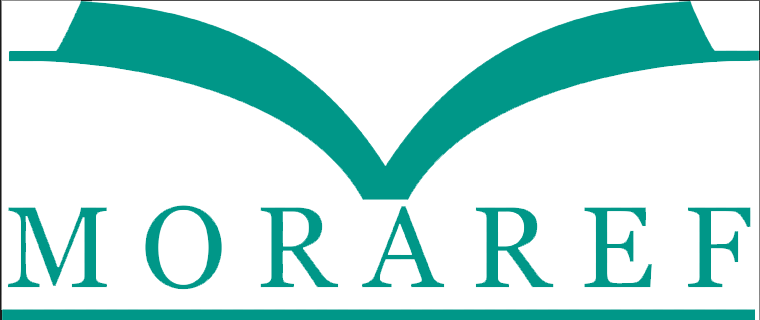MAP OF THE UTILIZATION OF SOCIAL MEDIA IN FORMING STUDENT LITERATION CULTURE IN MAKASSAR
Abstract
ABSTRACT
This study aims to see a map of social media use in shaping a literacy culture among students in Makassar. The ease of accessing information sources, copying and pasting information to other places, or sharing information with other parties, has changed students' literacy habits. Using a quantitative approach, this study distributes questionnaires to students via the google docs link. A total of 200 students who have been willing to fill out and return this research questionnaire. The result of this research found that social media has become a necessity for students, especially used for chatting with their friends. Apart from communicating, social media is also used for education, literacy, and fun. Regarding reading and writing literacy habits, social media provides easy access to information providers, so that students use it to meet their needs without having to bother, especially to re-read and check reading material. The variety of information changes rapidly, making students feel that they are sufficient to read news headlines without having to read the entire contents of the information. Likewise, regarding the credibility of news sources, it is not an important thing for students to pay attention to. This shows that the habit of using social media has not been able to help improve literacy skills among students.
ABSTRAK
Penelitian ini bertujuan melihat peta pemanfaatan media sosial dalam membentuk budaya literasi di kalangan mahasiswa di Makassar. Kemudahan dalam mengakses sumber informasi, menyalin dan menempel informasi ke tempat lain, atau membagikan informasi kepada pihak lain, telah mengubah kebiasaan mahasiswa dalam berliterasi. Dengan menggunakan pendekatan kuantitatif, penelitian ini menyebarkan angket kepada mahasiswa melalui link google docs. Sebanyak 200 mahasiswa yang telah bersedia mengisi dan mengembalikan angket penelitian ini. Hasik penelitian ini menemukan bahwa media sosial sudah menjadi kebutuhan mahasiswa, terutama digunakan untuk mengobrol dengan teman-teman mereka. Selain berkomunikasi, media sosial juga digunakan untuk pendidikan, literasi dan kesenangan. Terkait kebiasaan literasi baca tulis, media sosial dengan memberikan kemudahan dalam melakukan akses ke penyedia informasi, sehingga mahasiswa memanfaatkannya untuk memenuhi kebutuhan tanpa harus bersusah payah, terutama untuk membaca ulang dan memeriksa bahan bacaan. Ragam informasi yang terus berubah dengan cepat, membuat mahasiswa merasa cukup membaca judul-judul berita tanpa harus membaca keseluruhan isi informasi yang ada. Demikian pula mengenai kredibilitas sumber berita, tidak menjadi hal yang penting untuk diperhatikan oleh mahasiswa. Ini menunjukkan bahwa kebiasaan menggunakan media sosial, belum dapat membantu meningkatkan kemampuan literasi di kalangan mahasiswa..
Downloads
References
Referensi
Agwu, P. dan Okoye, U. (2017) Social media and insecurity of cultural values: Implications for social work practice in Nigeria. Conference: Presented at 2017 Interdisciplinary Research Conference, Ebonyi State University, Abakiliki on Poverty, Health and National Security.
Anderson, Terry (2019). Challenges and Opportunities for use of Social Media in Higher Education. Journal of learning for development. Vol. 6 no. 1 (2019): issue 1. Retrieved from https://jl4d.org/index.php/ejl4d/article/view/327
Boyd, D. 2007. Why youth (heart) social network sites: The role of networked publics in teenage social life. MacArthur Foundation Series on Digital Learning-Youth, Identity, and Digital Media Volume. Cambridge, MA: MIT Press. 1-26.
Boyd, D. and Ellison, N. (2007). Social network sites: Definition, history, and scholarship. Journal of Computer-Mediated Communication, 13(1), 1-11. Retrieved from http://jcmc.indiana.edu/vol13/issue1/boyd.ellison.html.
Chester, A., Kienhuis, M., Pisani, H., Shahwan-Akl, L., & White, K. (2013). Professionalism in Student Online Social Networking: the role of educators. E–Learning and Digital Media Volume 10, Number 1, 2013 www.wwwords.co.uk/ELEA.
Himayah, H. (2013). Layanan dan Pelayanan Perpustakaan: Menjawab Tantangan Era Teknologi Informasi. Khizanah al-Hikmah: Jurnal Ilmu Perpustakaan, Informasi, dan Kearsipan, 1(1), 1-6.
Kietzmann, H. (2012). "Social media? Get serious! Understanding the functional building blocks of social media". Business Horizons 54: 241–251.
Lavuri, R., Navulla, D., & Yamini, P. (2019). Effect of Social Media Networks on Academic Performance of Indian. Journal of Critical Reviews, Vol 6, Issue 4, p. 71-78
Lenhart, A., & Madden, M. (2007). Teens, Privacy & online social networks: How teens manage their online identities and personal information in the age of My Space. Washington, DC.
Liccardi, I., Ounnas, A., Pau, R., Massey, E., Kinnunen, P.Lewthwaite, S., Midy, A., & Sakar, C. (2007). The role of social networks in students’ learning experiences. ACM SIGCSE Bull 39(4), 224-237.
McQuail, D. (2008). Mass communication theory (5th ed). California: Sage Publishers.
Morahan-Martin, J., & Schumacher, P. (2000). Incidence and correlates of pathological Internet use among college students. Computers in Human Behavior, 16, 13–29.
Nugraha, M.T (2017). Budaya Literasi Dan Pemanfaatan Sosial Media Pada Masyarakat Akademik. At-Turats Vol. 11 No.2 (2017) p. 124 – 132
Olowu, A. O., & Seri, F. O. (2012). A study of social network addiction among youths in Nigeria. Journal of Social Science and Policy, Review 4, September 2012.
Osatuyi, B. (2013). Information sharing on social media sites. Computers in Human Behavior. Volume 29, Issue 6, November 2013, Pages 2622-2631
Prensky,M, On the Horizon (MCB University Press, vol.9 No.5, October 2001) Rapacki, S. (2007). Social networking sites: Why teens need places like myspace. Young Adult Library Services. 28-30.
Supratman, L.P., & Mahadian, A.B. (2017) Psikologi Komunikasi, (Yogyakarta: Deepublish. 2016).
Trusov, M., Bucklin, R., & Pauwels, K. (2009). Effects of word-of-mouth versus traditional marketing: Findings from an internet social networking site. Journal of Marketing, 73(5), 90–102.
Williams, A. Boyd, S. Densten, R. Chin, D. Diamond, and C. Morgenthaler, “Social Networking Privacy Behaviors and Risks”, In Proceeding of CSIS Research Day, Seidenberg School of CSIS, Pace University, USA. 2009.
Wise, B. (2009). Adolescent literacy: The cornerstone of student success. Journal of Adolescent and Adult Literacy, 52, 369-375.
Yu Chen and Starobin, S. (2019) Formation of Social Capital for Community College Students: A Second-Order Confirmatory Factor Analysis. Community College Review 47(1):3-30
By submitting your manuscript to our journal, you are following Copyright and License








